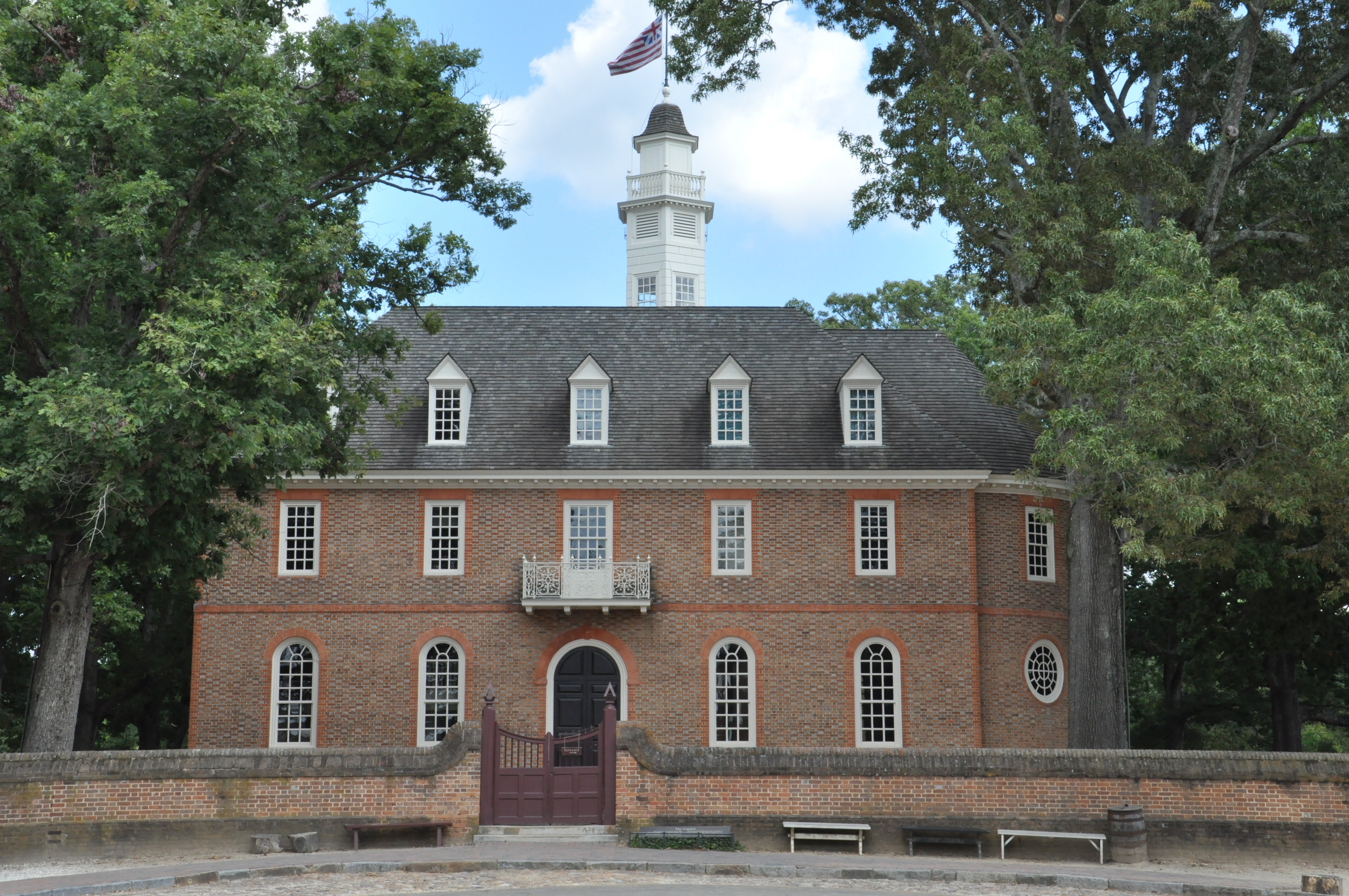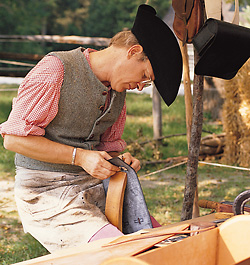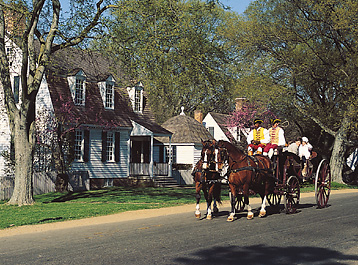Williamsburg (pop. 15,425) is a historic city that lies on a peninsula in Virginia between the James and York rivers. Williamsburg is a famous tourist attraction because the city’s Historic Area looks much as it did during colonial times. More than 80 original buildings, including many homes, have been restored to appear as they did in the 1700’s. In addition, over 400 structures, including public buildings, have been reconstructed on their original foundations.

Williamsburg was the capital of the Virginia Colony from 1699 to 1776 and of the Commonwealth of Virginia from 1776 to 1780. During colonial times, the city was a major cultural, political, and social center.
Many principles of self-government were established in Williamsburg. In 1765, the statesman Patrick Henry delivered a speech against the Stamp Act in the Williamsburg Capitol. There, the colonists adopted the Virginia Declaration of Rights in 1776. This document included the guarantees of liberty that became models for the Bill of Rights of the Constitution of the United States.
Early days.
In 1633, English colonists founded the settlement that later became Williamsburg. They chose the site because it had fewer mosquitoes and better soil drainage for crops than did the area around Jamestown, Virginia, the first permanent English settlement in America. The colonists called their community Middle Plantation because it lay in the middle of the peninsula. The College of William and Mary, the second oldest university in the United States, was founded in Middle Plantation in 1693. Only Harvard University is older.

In 1699, the colonists renamed their settlement Williamsburg in honor of King William III of England. Also in 1699, the capital of the Virginia Colony was moved to Williamsburg after a fire destroyed Jamestown. Williamsburg received a city charter in 1722.
Williamsburg was the most important city in the Virginia Colony. Twice a year, plantation owners and their families went to the city to attend sessions of the General Court, Virginia’s highest court. On these occasions, called publick times, Virginians also conducted business and attended auctions, balls, fairs, horse races, and other social events. The colony’s first newspaper, the Virginia Gazette, was published in Williamsburg in 1736.
Virginia became one of the first colonies to vote for independence from Britain. It passed the Virginia Resolution for American Independence in Williamsburg in May 1776. In 1780, during the Revolutionary War, the Virginians moved their capital from Williamsburg to Richmond. The westward shift of Virginia’s population made the more central location desirable. The people also feared that British warships might attack Williamsburg from the James River.
Williamsburg declined in importance and population after the Revolutionary War. Its economy came to depend largely on the College of William and Mary. In 1862, during the American Civil War, the Battle of Williamsburg was fought east of the city. The city changed little during the 1800’s and early 1900’s.
Restoration.
In 1926, the American philanthropist John D. Rockefeller, Jr., became interested in restoring and preserving the colonial appearance of the city. The idea came from W. A. R. Goodwin, minister of Williamsburg’s Bruton Parish Church. Rockefeller provided the money that set up The Colonial Williamsburg Foundation.
Williamsburg today.
Today, the Historic Area of Williamsburg covers more than 300 acres (120 hectares). A number of major historic buildings and many colonial craft shops are open to the public daily. Guides escort visitors through the buildings. Craftworkers demonstrate such colonial skills as barrelmaking, cabinetmaking, and blacksmithing, and trained character interpreters act out scenes and characters from the period. The guides, craftworkers, and interpreters are all in colonial costume. The furnishings of the homes, public buildings, and shops in Williamsburg make up one of the finest collections of American and English antiques in the United States. The DeWitt Wallace Decorative Arts Museum displays furniture, ceramics, silver, paintings, prints, textiles, and costumes. The Abby Aldrich Rockefeller Folk Art Museum has one of the most important folk art collections in the United States.

The Colonial National Historical Park includes much of Jamestown Island, several historic Yorktown homes, the Yorktown battlefield, and a scenic parkway that connects these sites with Williamsburg. Jamestown, Williamsburg, and Yorktown form what is often called the “historic triangle” of Virginia. Also nearby is Busch Gardens Williamsburg, an amusement park.

Williamsburg covers about 9 square miles (23 square kilometers), almost five times its area in colonial times. Many modern housing developments surround the city. Williamsburg has a council-manager government. The people elect the five members of the council to four-year terms. Williamsburg is the seat of James City County.
